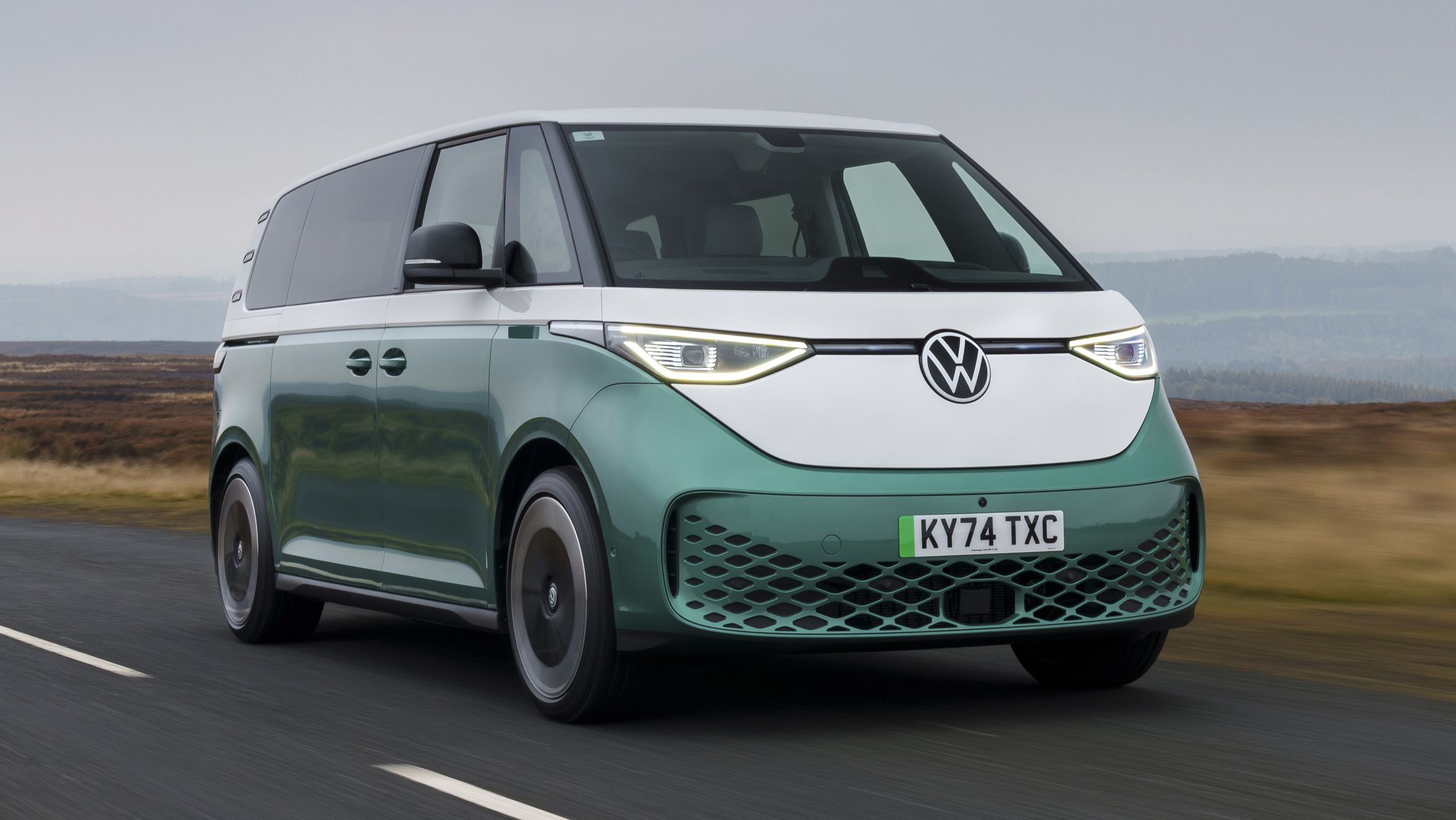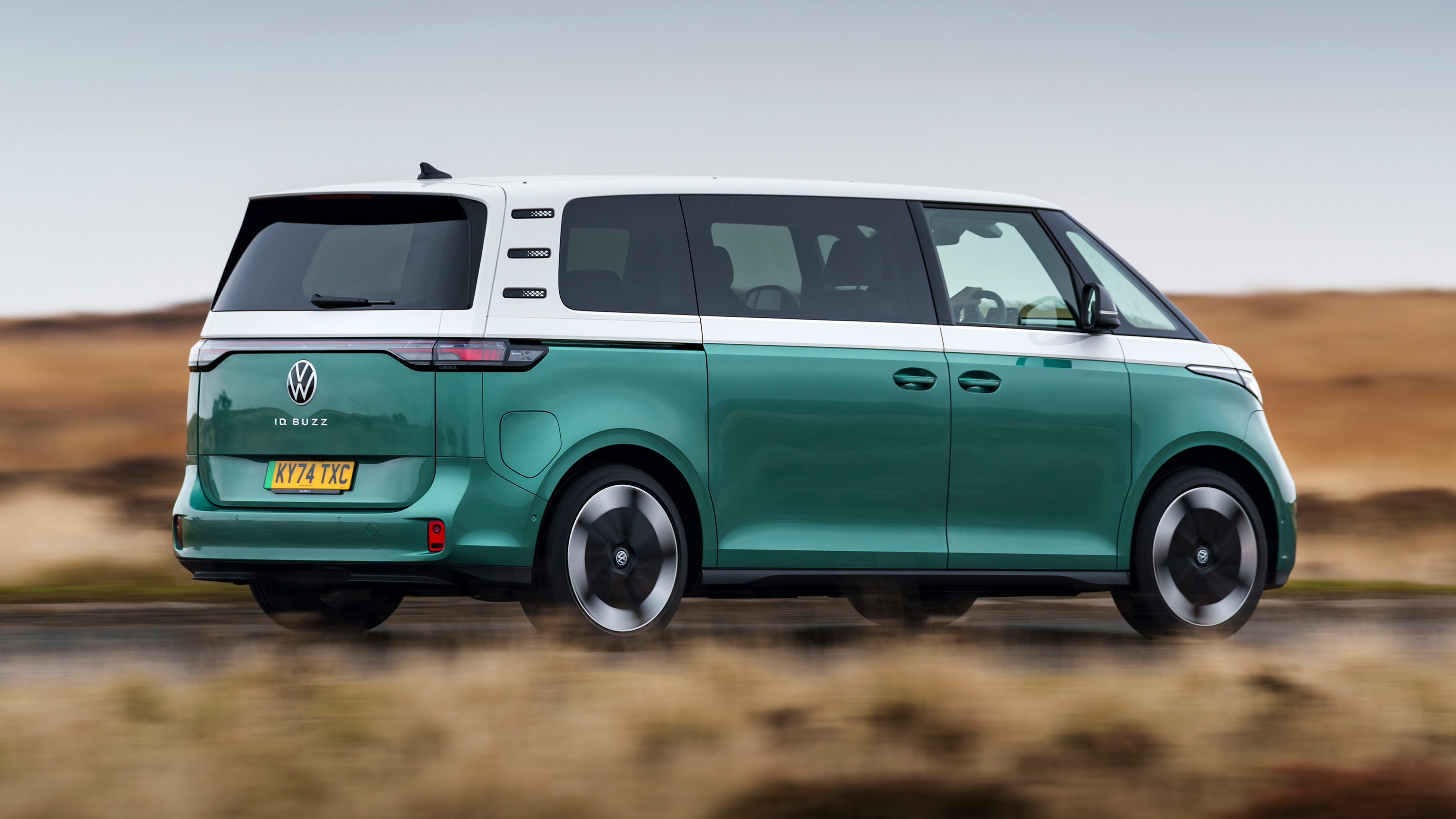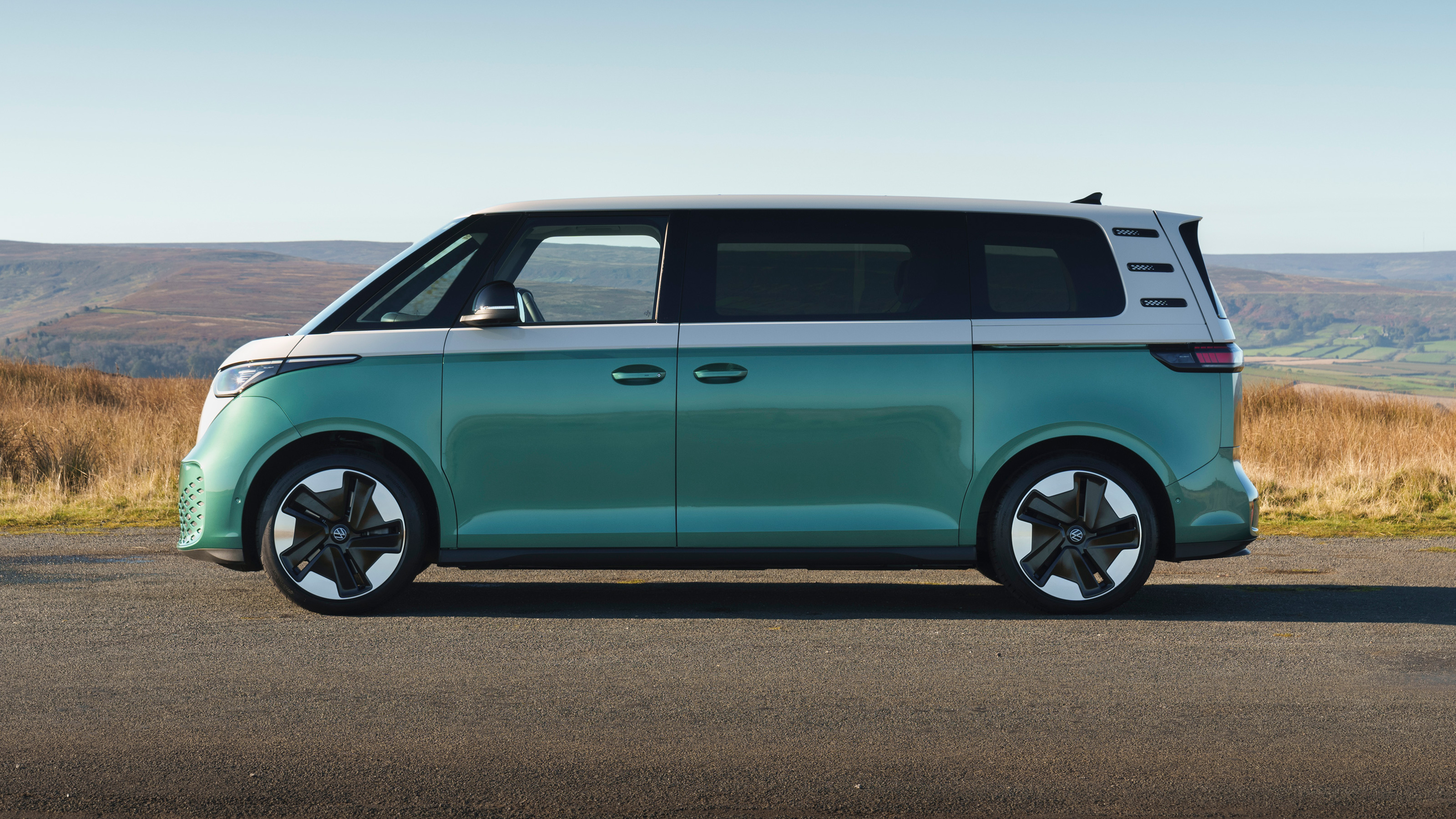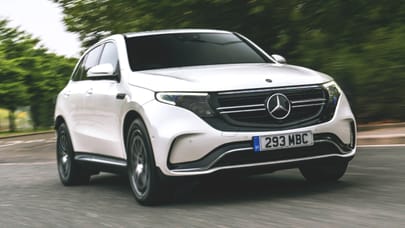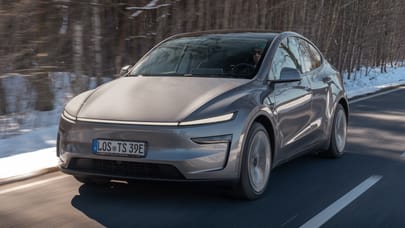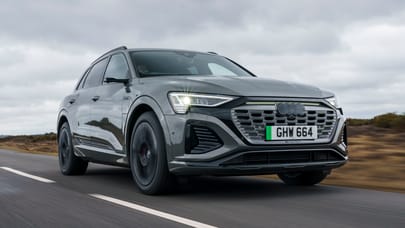
Good stuff
Retro-inspired styling, airy and uplifting driving environment, huge boot, sliding doors
Bad stuff
Underneath the glitter it’s a regular MPV, suspect infotainment, average range
Overview
What is it?
It’s the retro recreation we’ve all been waiting for, VW’s take on a latter day Type 2, a nod to a funkier electric future and a family wagon you might actually want to drive. It’s the ID. Buzz.
What’s the score then? Full camper van? Seven seats? The promise of regular breakdowns?
No ‘California’ camper van version just yet, in fact word on the street is that’s been pushed to the end of this decade to allow demand to warm up a bit. Three versions are now available: a five-seat ID. Buzz, an ID. Buzz Cargo commercial van with up to three seats across the front and a cavern behind, and a stretch Buzz seven-seat (the green one in the gallery above). Spoiler alert – the seven-seater is categorically the one you want… more on that in a bit.
So it’s an MPV in a fancy outfit?
That’s about the size of it. But compared to any other family car out there, this is going to look and feel very different. It makes the humble MPV desirable, for a start. But that is what this is: an MPV. There are a few neat options though, including a load divider to vertically split the boot and provide a raised floor that lines up with the folded rear seats. A mattress makes this a semi-Cali, plus there’s a whole host of third-party companies waiting to sell you all sorts of accessories – even a full camper conversion if you can’t wait for the official one.
The basics are as follows. It uses the same MEB platform as the ID.3, ID.4 and ID.5, but that’s scaleable, so here it’s been lengthened, gaining a 2,988mm wheelbase that’s as long as the current Caravelle’s. There are sliding doors both sides. The powertrain has recently been upgraded so the RWD five-seat version gets a power bump from 204bhp to 282bhp, slashing the 0-60mph time from 10.2 to 7.6 seconds. And you feel it. There’s a clarity to the throttle response and a surge off the line that does a miraculous job of masking the 2.7-tonne kerbweight.
There’s also a battery bump from 77kWh to 79kWh in the five-seater, extending the range to a claimed 283 miles on the WLTP test – think more like 170 if you’re loaded and checking out the 99mph top speed, but in reality probably around 200-230 miles. Unless it’s winter, when you’re likely back at the lower figure.
Don’t go thinking it’ll be a perfect family ski-tripper. You’ll be visiting every aire in France. And besides, there’ll be no snow when you get there anyway. A 5-80 per cent charge takes 35 minutes (assuming you can find a 170kW charger). However the new, stretched seven-seat version does improve matters. More wheelbase means a bigger 86kWh battery and up to 291 miles of range.
If going fast in something with the aerodynamic profile of a hay bale is your thing, there’s even a GTX version. Available exclusively in 4WD, with a motor on each axle for a total of 335bhp and 413lb ft of torque. The 0-62mph drops to 6.1 seconds, the price leaps up to almost £70k, but you do get a towing capacity of 1,800kg versus 1,000kg for the standard Buzz.
So what’s happened to the Caravelle?
It’s being phased out. The Transporter and California versions will continue, but VW is pointing those wanting a combustion-engined people carrier towards the new T7 Multivan now.
Moving on. Despite that Caravelle-matching wheelbase the overhangs are smaller so the Buzz is about 200mm shorter overall. It’s also 30mm lower but about 60mm wider. But it’s a lot smaller inside – the body frame is thicker, which is great for torsional stiffness and refinement, but cuts into interior space.
However, by SUV standards it’s massive. Where they have boots of around 600 litres, the five-seater 1,121 litres. Shame the three seats across the back are rather ordinary, even if the 60:40 split bench does slide and fold flat. Go for the seven-seater and you’ve got options – 306-litre of space with all the seats in place, 1,340 with the third row folded and 2,469 with the second row folded too. Click the Interior tab for more on practicality.
How’s the driving environment?
Stunning. Simple as that. It may feel rather plain and ordinary in the back and boot, but up front is where VW has invested. The view forward is compelling. The upright windscreen is a long way away, bracketed by tall quarterlights so you feel surrounded by glass. Meanwhile the dash design and door trims are bright and uplifting.
The driving position is more relaxed than a Caravelle, the steering comes out to you a bit more, you sit lower in relation to the pedals. There’s still armrests on both sides. Be aware that if you go for the Cargo the cabin is notably greyer, more plasticky and less uplifting. And you still have to deal with the other fly in the ointment: interacting with VW's notoriously patchy infotainment. The good news is the latest round of upgrades adds a new, larger 12.9-inch infotainment screen which still isn’t the last word in glitch-free, intuitive interfaces, but it’s better.
How does it drive?
It’s not demanding to drive, but it shouldn’t be – the ease of EV is the appeal. So this is light and easy to pilot, and combined with the driving environment delivers a sense of wellbeing that no SUV this side of a Range Rover can match. The ride is a little lumpen on the biggest wheels, the steering a little numb on the smallest, but by van or even MPV standards the ID. Buzz is a sophisticated thing. It feels strong, robust, smooth and carries itself well.
Around town it’s wieldy and since only the rear wheels are driven, the turning circle is impressively tight. There are driving modes. VW needn’t have bothered.
What’ll it cost?
Prices for the five-seat passenger car start at £59,035, the seven-seat starts at £59,545 – a remarkably short price walk – the GTX starts from £67,435, while the Cargo version costs from £48,541. That’s the one camper van converters will be focusing on before VW gets its own eye in. Just bear in mind one of the reasons the Cargo is cheaper is that it uses those more basic materials inside and doesn’t have the same noise insulation. Rain rattles the roof.
Yes, £59k seems a lot for a van, but look at what people spend on regular VW Transporters. Or more to the point the Land Rover Discovery, BMW X5, Mercedes GLE et al. This is bigger inside, friendlier and far more forward looking than any SUV.
What's the verdict?
A convincing vision of a family car done better. We love it because it’s different, because it’s a new anti-SUV template, because it’s fun to be in and around. But equally we’re not blind to its drawbacks. The range could be better, but you need slippery aero for that, and it’s by no means cheap. However, the seven-seat version has unlocked the Buzz’s potential making proper use of the space and versatility the Buzz promised, and for only a few quid more. It’s the car the ID. Buzz always should have been.
For those up front the experience is unique and special, it’s a shame that for those behind, apart from sliding doors and intensely generous headroom, there’s less to lift the spirits.
But right now, if you’re looking at any other premium crossover or SUV – be it electric or internal combustion – doesn’t this look like a brighter, more engaging and interesting alternative? It’s beguilingly simple and yet entirely uplifting.
The Rivals
Trending this week
- Car Review
BMW iX3




